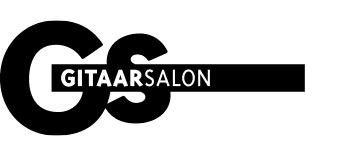Hans Haug
Hans Haug (July 27, 1900 in Basel – September 15, 1967 in Lausanne) was a Swiss composer in the primitivist style.
The eminent Swiss composer, Hans Haug studied at the Basle Conservatory and the Munich Music Academy, also attending master classes with Busoni in Zurich. Haug’s catalogue of works includes orchestral music, concertos, operas, film scores, string quartets, and oratorios. In December 1950 he submitted a Concertino for Guitar and Chamber Orchestra for the music competition in Siena, receiving first prize in the large ensemble category. Haug went on to write a number of pieces for guitar including Alba (Dawn), his first attempt at composing for solo guitar.
Hans Haug studied piano and ‘cello at the Basel Conservatory and participated in master classes given by Ferruccio Busoni in Zurich, later studying composition and conducting at the Music Academy in Munich. Haug conducted several different Swiss radio symphony orchestras. From 1947 to 1960, he taught harmony and counterpoint at the Lausanne Conservatory.
Haug’s catalogue of works is immense and includes string quartets, various chamber works, vocal music, concertos, symphonic works, operas, oratorios, and film music in addition to his compositions for, or including, the guitar.
In December, 1950, the “Accademia Musicale Chigiana” in Siena, Italy held a composition competition for guitar in the following combinations:
1. Concertino for Guitar and Chamber Orchestra;
2. Quintet for Guitar and String Quartet;
3. Guitar Solo (Sonata, Suite or Fantasy).
Twenty-five works were submitted. President of the jury was George Enescu; among the other members were Ricardo Brengola, Gaspar Cassadó, and Andrés Segovia. The prizes awarded in August, 1951 did not recognize any of the guitar quintets; Alexandre Tansman’s Cavatina for guitar solo and Hans Haug’s Concertino for Guitar and Chamber Orchestra both received prizes. It was Haug’s first guitar composition.
The prizewinners were promised that Segovia would premiere their pieces in the summer of 1952 and that they would be published afterwards by Schott of London. Whereas this promise was kept in the case of Tansman’s Cavatina (Schott published it in 1952), Segovia never played Haug’s Concertino,2, which had to await publication until three years after Haug’s death in 1970. It appeared in a facsimile edition under the auspices of Edizioni musicali Bèrben. Alexandre Lagoya and the Lausanne Chamber Orchestra played its world premiere.
Encouraged by his prize in the Siena competition, Haug continued to explore the guitar. He took guitar lessons on a regular basis with José de Azpiazu from October 28, 1953 to January 27, 1954 in order to learn more about the instrument. His first composition for solo guitar, Alba, and possibly his Preludio as well (which Segovia later called “Postlude”), were written around this time. Apparently, Alba was in Segovia’s possession shortly thereafter; in a letter from Assisi dated September 19, 1954, he apologizes to Gagnebin for having studied only one work of his: “Please be aware that I am also behind in my work on the other pieces by Villa-Lobos, Tansman, Haug, Rodrigo, Torroba, Castelnuovo, etc. You will not see any premieres at all on the programs of my next concerts (…).” Later, Segovia did record Alba and Postlude on the record: Andrés Segovia with the Strings of the Quintetto Chigiana (Decca DL 9832). This was Segovia’s only recording of any of Haug’s works.
In 1961, Segovia asked Haug to teach some composition courses at the summer music academy in Santiago de Compostella,18) and it was here that Haug completed his Prélude, Tiento et Toccata on September 28, 1961. No correspondence between Haug and Segovia is known to exist since they communicated mostly by telephone.
Haug’s Work With Other Guitarists
Hans Haug became acquainted with Luise Walker at the Geneva Competition in 1956.As a result of this meeting, he wrote his Fantasia for Guitar and Piano in 1957 which he dedicated to her. In 1963, his Capriccio pour flûte et guitare was written for the duo Werner Tripp and Konrad Ragossnig (released on RCA Victor 440.182: “L’Anthologie de la guitare”). Also, Haug composed a Concerto pour flûte, guitare et orchestre in 1966, and he used the guitar in the following works as well: Variations on a Theme of Jacques Offenbach (for orchestra), Don Juan à l’étranger (comic opera), Les Fous (comic opera), Justice du roi (tragicomedy) and Tag ohne Ende (“Day Without End”, film music).


Plaats een Reactie
Meepraten?Draag gerust bij!